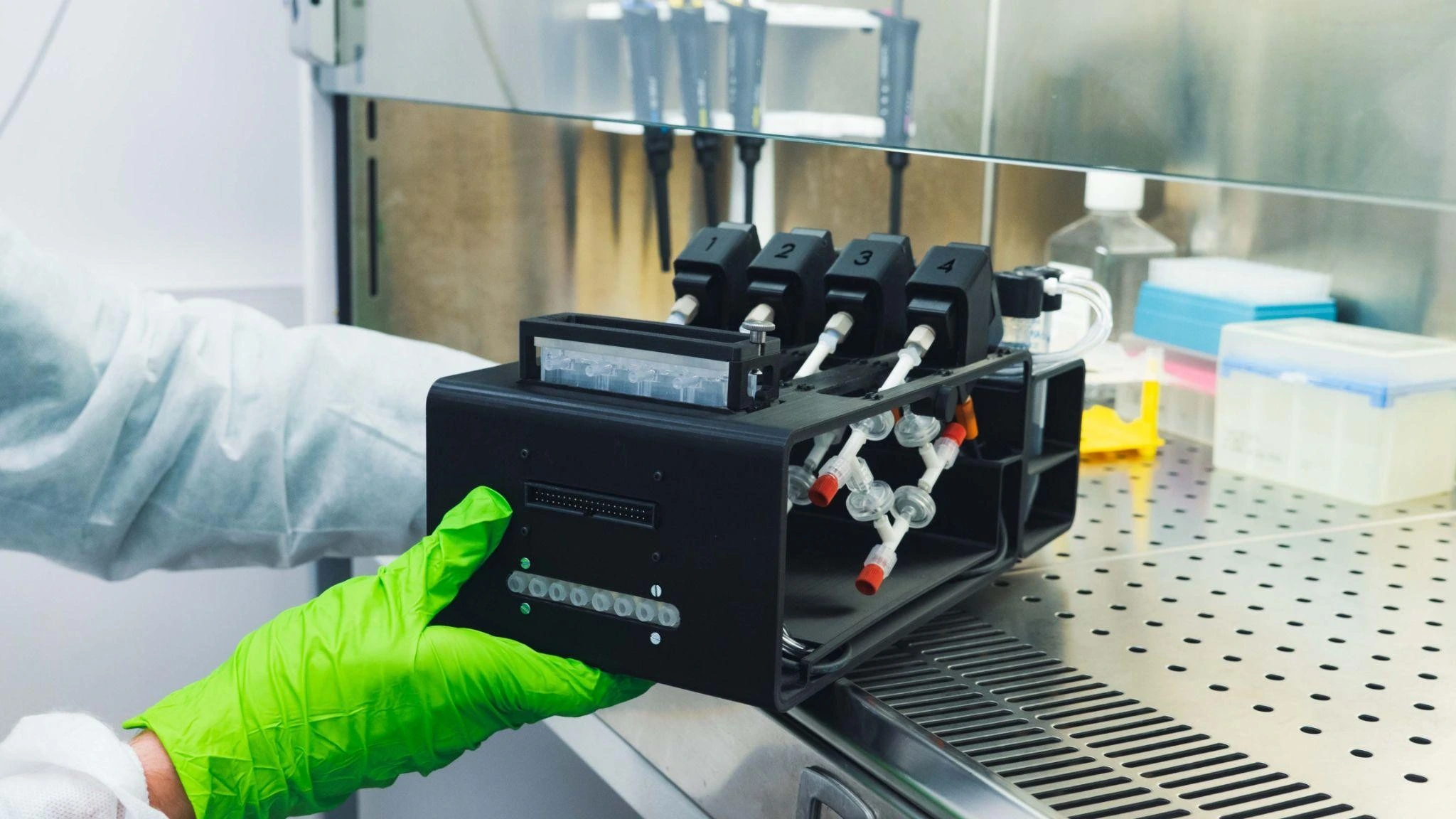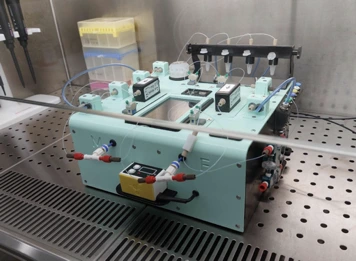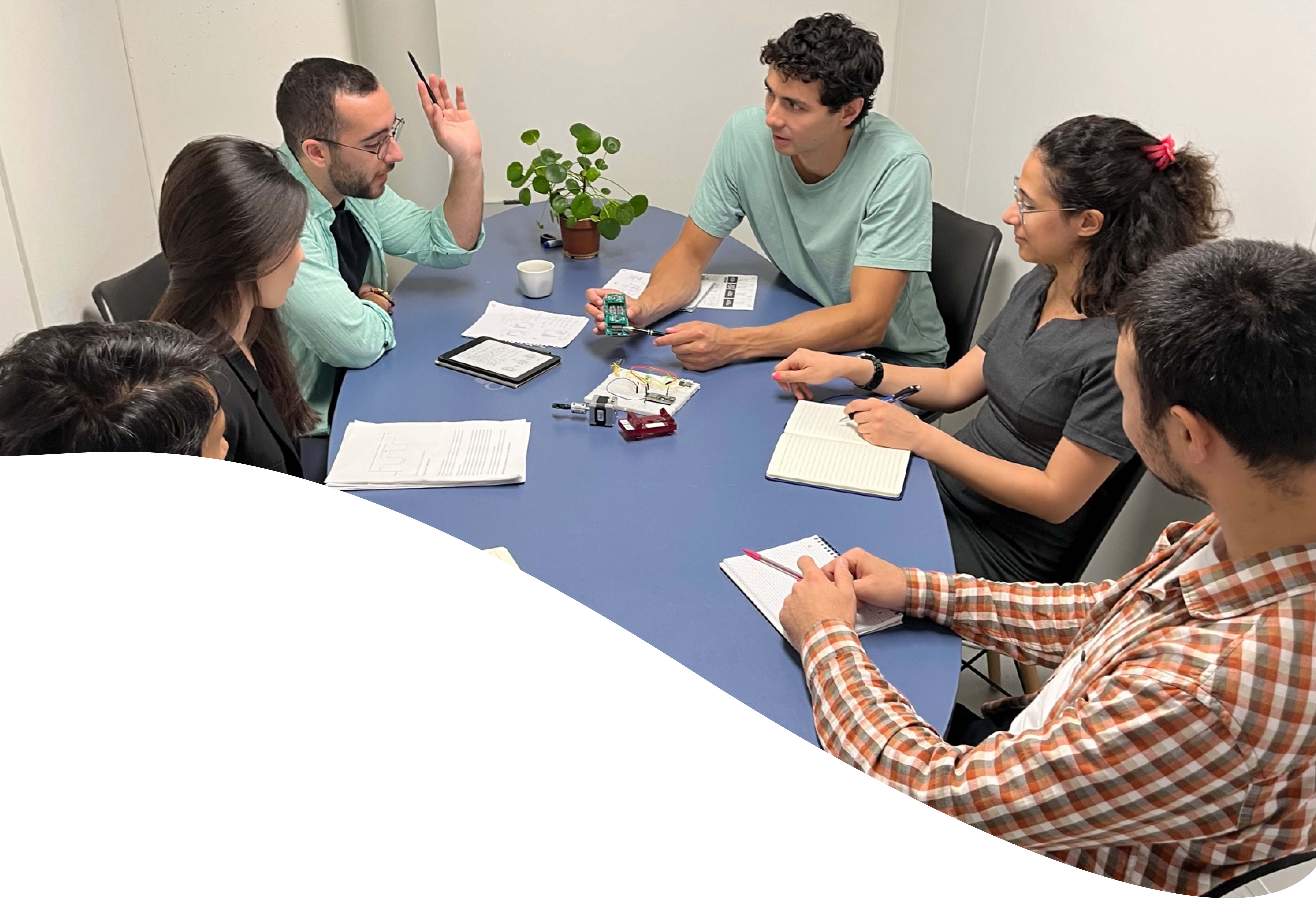Organ-on-a-chip system
Author
Camila Betterelli Giuliano, PhD
Publication Date
February 27, 2025
Keywords
Organ-on-a-chip
Cell culture
Bioreactor
Flow control
Co-culture system
Intelligent Microfluidics
Deep Learning
Microfluidic Devices
Artificial Intelligence
Machine Learning
Your microfluidic SME partner for Horizon Europe!
Microfluidics gained momentum as the future backbone of biotechnology and life sciences because it scales down assays to the order of magnitude of the cell, amplifying signals that would be otherwise impossible to detect.
Organ-on-a-chip system was born from this principle. Conventional cell culture handles cells in bulk and in an oversimplified environment that does not resemble the human body. When we move to animal studies, the models are complex but not equivalent. Adding microfluidics to cell culture increases complexity without losing control. You can co-culture human cell types usually found together in the body in nearby chambers so the secreted molecules can interact with the cells in a timely manner. You can add flow to mimic bodily fluids. You can add stretch or compression to mimic mechanical forces.
The benefits are only starting to be explored, but we, as the MIC, have a lot of experience in implementing a complex organ-on-a-chip system for a variety of applications in the frame of European projects.
Alternative, heart-on-chip to elucidate chemical exposure

The project Alternative is part of the Green Deal and focuses on understanding how chemical exposure affects cardiac tissue in a heart-on-chip model. We developed a microfluidics platform so our partners can culture cardiac tissue in bioreactors with sensors.
The platform allows them to run four bioreactor cultures in parallel in an automated manner, so the experiments can run for long stretches of time. Then, they expose the cells to cardiotoxic industrial chemicals and pharmaceuticals, and analyse the readings of the sensors (GA no. 101037090).
Tumor-LN-on-Chip, lymph node-on-chip for metastasis studies

Metastasis is a major problem in cancer patients. Cancer cells can use the lymphatic system to spread and colonize other parts of the body, but the mechanisms behind it are not well understood. And that’s the goal of the Tumor-LN-on-Chip project (GA no. 953234).
To study motile cells, being close to the microscope was a must. However, most microscope incubator chambers are not designed to fit microfluidics equipment. So, we designed a setup that would allow our collaborators to be independent of the CO2 incubator and the environmental chamber of microscopes as well, while keeping ideal culturing conditions for cell culture.
With it, our partners managed to culture lung cancer cells for 16 days outside the incubator.
LIFESAVER, placenta-on-chip to test effects of chemical pollutants on fetuses

The project LIFESAVER is also part of the Green Deal, but focuses on the communication between mother and fetus in a placenta-on-chip model to understand how toxic chemicals cross the placental barrier (GA no. 101036702).
The MIC developed a barrier platform that allows them to recirculate media independently, measure O2 levels, and collect samples in a time-resolved manner. All on both sides. Communication between the mother side and the fetus side happens in a specialized membrane in a organ-on-a-chip system developed by one of the project partners.
Want us as partners in your project for 2026-2027 call?
Curious what's next? Sign up for our Newsletter
FAQ – Organ-on-a-chip system
What exactly is an “organ-on-a-chip” system?
An organ-on-a-chip is a small, engineered device that mimics how real human tissues work, but in a lab setting. Instead of growing cells in a regular dish, we grow different types of human cells together in tiny, connected chambers. These chambers are perfused with fluids that act like blood or other body fluids, and we can even apply physical forces like stretching or compression. The result is a realistic, controllable model of human organs that’s much closer to what happens inside the body.
Why use microfluidics for organ models instead of traditional cell culture or animal testing?
It comes down to scale and control. Microfluidics lets us work at the same scale as individual cells, which improves accuracy and allows us to track changes over time in great detail. Compared to regular cell cultures, you get more consistent and meaningful data. And compared to animal testing, you get human-specific results and can precisely adjust experimental conditions, something that’s nearly impossible to do in animals.
What kinds of systems has MIC already built?
Here are three examples that show how broad our applications are:
- Heart-on-a-chip: A platform that runs four miniature heart tissue cultures in parallel, complete with sensors, used to test how drugs and chemicals affect the heart.
- Lymph-node-on-a-chip (Tumor-LN-on-Chip): Designed so that researchers can observe cells directly under a microscope without removing them from optimal conditions. Our partners have cultured lung cancer cells for over two weeks in this setup.
- Placenta barrier-on-a-chip: A model of the maternal–fetal barrier that continuously monitors oxygen levels and tracks how substances move between the two sides over time.
What makes your systems “instrumented” and not just fancy microchannels?
We design them with built-in sensors and controls from the beginning. That means real-time monitoring of flow, pressure, and oxygen, automated media exchange, compatibility with live imaging, and even mechanical stimulation (like stretching tissues). Everything is integrated into one controlled environment.
Can your systems run long experiments without supervision?
Yes. Our setups are made for stability and automation. They can run for days or even weeks thanks to parallel bioreactors, bubble-resistant channels, and software-controlled fluid systems. That means fewer manual interventions and cleaner, more reliable datasets.
How do you make different cell types communicate with each other (co-culture)?
Cells that are in neighboring chambers are separated by semipermeable barriers. This lets molecules and signals pass naturally between them, just like in the body. By fine-tuning fluid flow and timing, we recreate the same physical and chemical environment cells would experience in real tissues.
Can these systems work directly under a microscope without needing a full incubator?
Yes. We’ve built compact environmental controls, for temperature, humidity, and gases, that fit right on the microscope stage. This means you can watch living cells in real time without compromising their environment. It’s a simple solution to a common challenge in live-cell imaging.
We already have the chips - can you provide just the control system?
Absolutely. We can add pumps, valves, and sensors to your existing chips to ensure everything works smoothly with your microscope or plate reader.
How does this help build a competitive Horizon Europe proposal?
Two main strengths:
- Credibility of the technical workplan – deliverables set in deployed organ-on-chip platforms with well-defined validation criteria.
- Impact – Our systems produce human-relevant data, reduce the need for animal testing, and speed up research translation.
Including MIC as an SME (small or medium enterprise) partner adds real execution capacity – something reviewers look for. From experience, proposals that include us have about twice the success rate compared to the average.
How does the MIC handle IP (intellectual property) within EU projects?
We follow EU rules and respect the agreements made within the consortium. We’re flexible, depending on the project’s requirements.
Can the MIC support the scale-up or industrialization of the prototype?
We mostly handle prototyping. For industrialization, we can put you in contact with partners or manufacturers we’ve worked with before.


